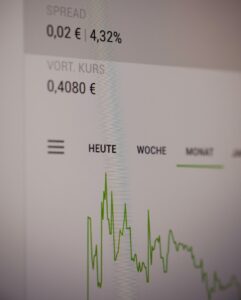How to Analyze Market Structure in Forex Trading: A Step-by-Step Guide
Analyzing market structure is a crucial skill for any forex trader. It provides valuable insights into the market’s behavior, helps identify trends, and allows traders to make more informed trading decisions. In this step-by-step guide, we will explore the key elements of market structure analysis and how to apply it to your forex trading strategy.
Step 1: Understand Market Structure
Market structure refers to the overall framework of the forex market, including its highs, lows, and trends. It consists of three main elements: peaks, troughs, and trends. Peaks represent the highest points in price, while troughs represent the lowest points. Trends connect these peaks and troughs and indicate the overall direction of the market.
Step 2: Identify Peaks and Troughs
To analyze market structure, you need to identify and mark the peaks and troughs on your price chart. Peaks are formed when the price reaches a high point and starts to decline, while troughs are formed when the price reaches a low point and starts to rise. By connecting these highs and lows, you can determine the trend direction.
Step 3: Draw Trendlines
Trendlines are an essential tool in market structure analysis. They help traders visualize the trend and provide potential entry and exit points. To draw a trendline, connect at least two peaks or troughs in an uptrend or downtrend. An uptrend is formed when higher lows and higher highs are observed, while a downtrend is formed when lower highs and lower lows are present.
Step 4: Identify Support and Resistance Levels
Support and resistance levels are significant areas on the price chart where the market tends to reverse or consolidate. To identify these levels, look for areas where the price has previously reversed or struggled to break through. Support levels are located below the current price, while resistance levels are located above it. These levels can act as potential entry or exit points for trades.
Step 5: Use Moving Averages
Moving averages are widely used in forex trading to identify trends and filter out market noise. They smooth out price fluctuations and provide a clearer picture of the market’s direction. The most common types of moving averages used are the simple moving average (SMA) and the exponential moving average (EMA). Traders often use the 50-day and 200-day moving averages to identify long-term trends.
Step 6: Apply Fibonacci Retracement
Fibonacci retracement is a popular technical analysis tool used to identify potential levels of support and resistance. It is based on the Fibonacci sequence, which is a series of numbers where each number is the sum of the two preceding ones. By applying Fibonacci retracement to a significant price move, traders can identify potential levels for price reversals and continuation.
Step 7: Analyze Price Patterns
Price patterns are formed by recurring formations or shapes on the price chart. These patterns provide valuable information about market sentiment and can indicate potential future price movements. Some popular price patterns include triangles, wedges, double tops, double bottoms, and head and shoulders patterns. By recognizing and understanding these patterns, traders can make more accurate predictions about the market’s direction.
Step 8: Monitor Economic News and Events
Lastly, it is crucial to stay updated with economic news and events that can impact the forex market. Economic indicators, central bank announcements, and geopolitical developments can all influence market structure and trends. By keeping an eye on these factors, traders can adjust their strategies accordingly and avoid potential market shocks.
In conclusion, analyzing market structure is an essential skill for successful forex trading. By understanding the peaks, troughs, and trends of the market, drawing trendlines, identifying support and resistance levels, using moving averages, applying Fibonacci retracement, analyzing price patterns, and monitoring economic news and events, traders can gain valuable insights into the market’s behavior and make more informed trading decisions. Remember, practice and experience are key to mastering market structure analysis, so take the time to apply these techniques to real-life trading scenarios.





